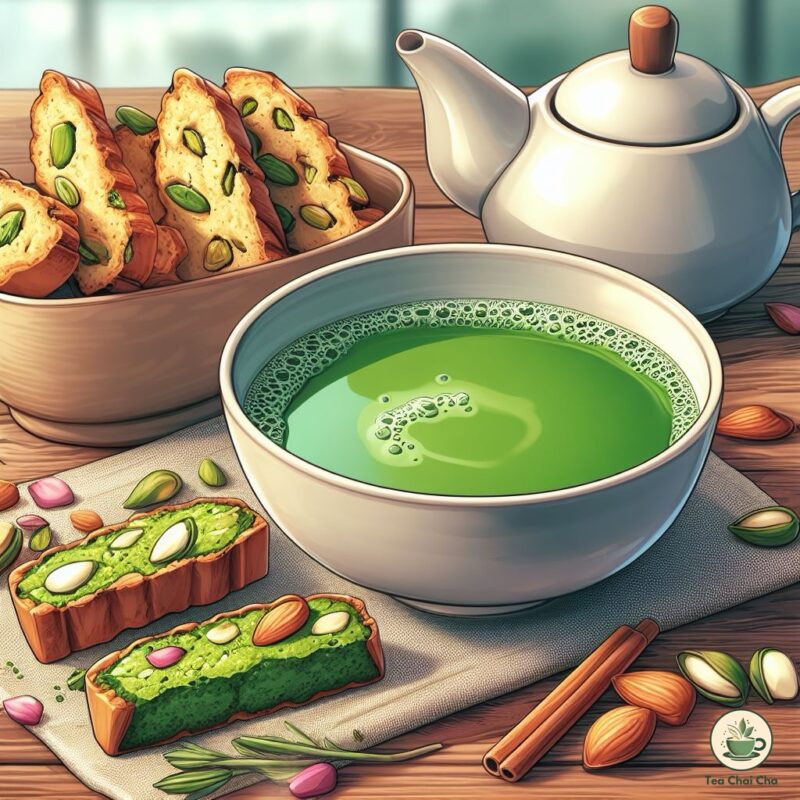A couple of years back, matcha became super popular.
You started seeing it all over the place – in lattes, ice cream, smoothies, and even icing.
But today, let’s keep it simple and talk about the easiest way to enjoy it: by mixing it with hot water to make a frothy and healthy tea.
You know, the kind that’s just perfect on its own.
So, forget all the fancy stuff for a moment and focus on whisking up a cozy cup of matcha tea with me!
I will guide you with a simple matcha green tea recipe in this guide, with delicious food pairings, and drink variations.
What Is Matcha? – The Japanese Green Tea
Matcha tea is a special kind of Japanese green tea that’s like no other.
Imagine vibrant green powder that’s made from finely ground green tea leaves.
It’s like the superhero version of regular tea because it’s super concentrated and packed with all sorts of good stuff.
People in Japan have been enjoying matcha for a long time, using it in special tea ceremonies and everyday sipping.
The cool thing is, you’re not just drinking water infused with the tea’s flavor – when you drink matcha, you’re actually consuming the whole tea leaves, which makes it extra healthy.
It’s like sipping a cup of nature’s power-up potion!
The taste might be a little different from what you’re used to, but many folks find it refreshing and earthy.
So, if you’re curious about trying new and unique flavors, matcha tea might be your cup of tea!
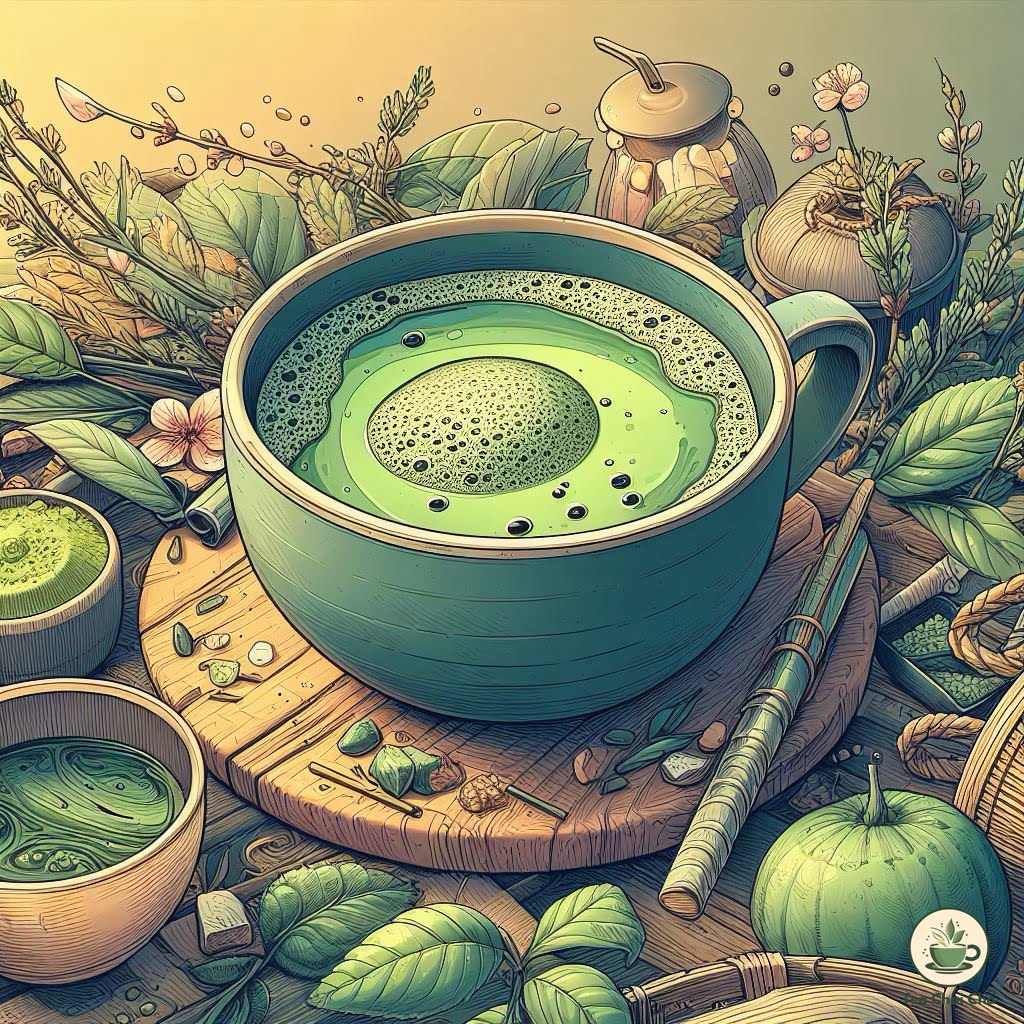
Is Matcha and Macha the Same?
Matcha and “macha” are both types of green tea, and they are actually the same thing.
The difference in spelling comes from the way Japanese words are sometimes transliterated into English.
In Japanese, it’s spelled as “抹茶,” which is pronounced “ma-cha.”
However, when English speakers try to say “ma-cha” correctly, it can sound a bit like there’s a “t” in it, so they sometimes write it as “matcha” to help with the pronunciation.
So, to keep it simple, “matcha” and “macha” are the same delicious green tea from Japan, just spelled differently in English to make it easier to say correctly.
Whether you call it “matcha” or “macha,” it’s still that lovely, vibrant green tea that many people enjoy!
What You Need to Make Matcha Tea
Here’s a simple guide to help you choose what you need to make matcha tea:
Matcha Powder
Start with good quality matcha powder. Look for bright green color and smooth texture.
You can choose between ceremonial grade (for a more traditional and delicate taste) and culinary grade (for cooking and blending).
Tea Bowl (Chawan)
You’ll need a bowl to whisk your matcha in.
Pick a bowl that feels comfortable in your hands.
Traditional Japanese tea bowls are great, but any wide and shallow bowl will do.
Bamboo Whisk (Chasen)
This is a key tool for making matcha.
It helps you mix the powder into a smooth, frothy tea.
Choose one with more tines for a better whisking experience.
Sifter or Fine Mesh Strainer
To avoid clumps, use a sifter or strainer to sift the matcha powder into the bowl before adding water.
Measuring Scoop (Chashaku) or Teaspoon
This helps you accurately measure the matcha powder.
If you don’t have a chashaku, a regular teaspoon works too.
Hot Water
Use water that’s around 175°F (80°C).
You can bring water to a boil and then let it cool for a few minutes.
Whisk Holder (Kuse Naoshi) (Optional)
This holds the shape of your bamboo whisk and helps it last longer.
It’s not essential, but it’s a nice addition.

How to Make Matcha Green Tea – Step-by-Step Guide
Matcha is a finely ground powder of specially grown and processed green tea leaves, known for its vibrant color and unique flavor.
Here’s a simple step-by-step guide to help you make a delicious cup of matcha tea:
Step 1: Gather Your Supplies
Before you start making matcha tea, make sure you have everything you need.
You’ll need matcha powder, a bamboo whisk (called a chasen), a matcha bowl (chawan), a sieve, hot water, and a teaspoon.
Step 2: Boil Water
Boil some water, then let it cool for a minute or two.
You want the water to be around 175°F (80°C), not boiling hot.
Boiling water can make your matcha taste bitter.
To enjoy a mellower matcha flavor, you can use water 158°F (70°C).
Step 3: Sift the Matcha
Take your matcha bowl and sift about 1-2 teaspoons of matcha powder through a fine sieve into the bowl.
This helps break up clumps and makes your matcha smoother.
Step 4: Add Hot Water
Pour a small amount of hot water into the bowl with the matcha powder.
Use about 2 ounces (60 ml) of hot water for every 1-2 teaspoons of matcha powder.
Step 5: Whisk It
Hold the bamboo whisk like you’re holding a pen and whisk the matcha and water together vigorously.
Make a “W” or “M” motion until the matcha is fully dissolved and a frothy layer forms on top.
Step 6: Enjoy
Your matcha tea is ready!
Sip it slowly and savor the unique flavor.
You can add more hot water or a touch of sweetener if you like.
Step 7: Clean Up
After enjoying your matcha, rinse your matcha bowl and whisk with warm water.
Let them air dry to keep them in good condition for your next cup of matcha.
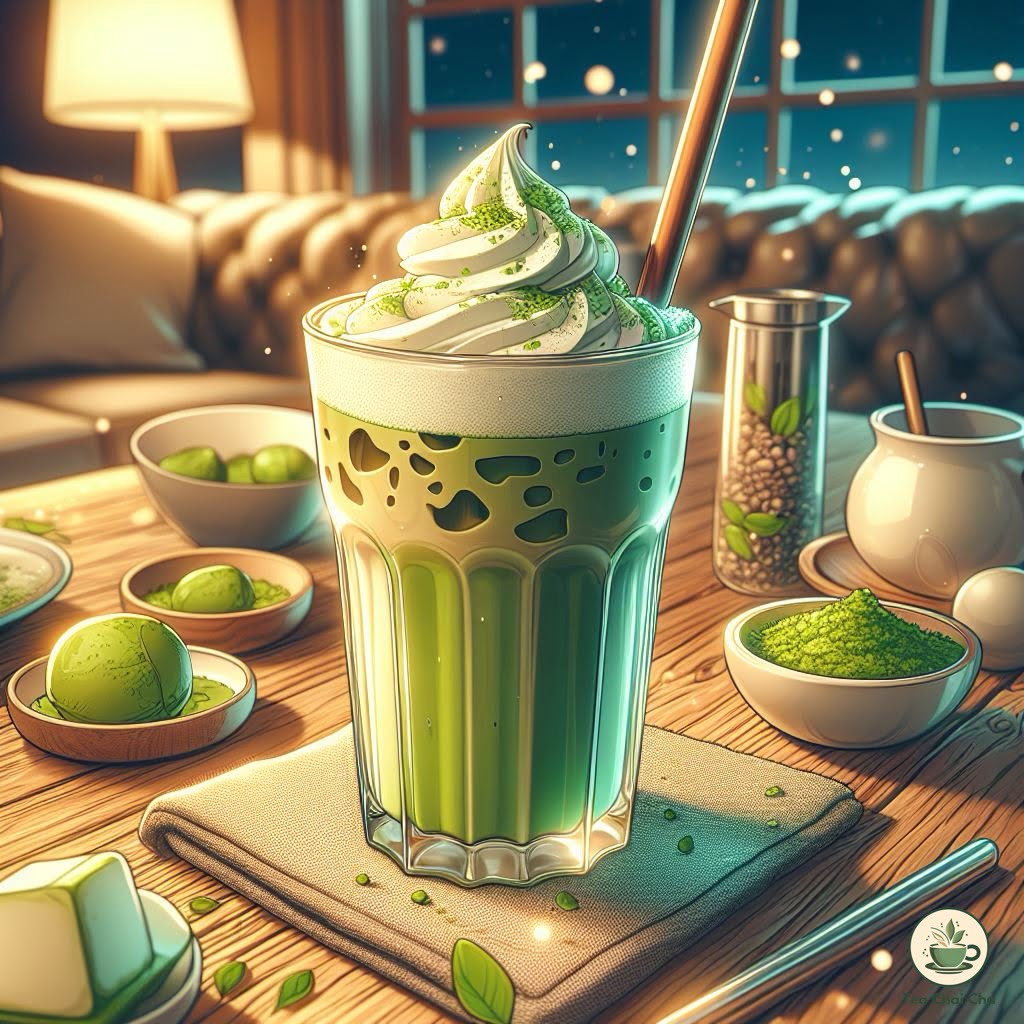
Matcha Tea Hot or Cold?
When it comes to enjoying matcha tea, you have two delicious options: hot or cold.
Let me guide you through both choices so you can pick the one that suits your preferences.
Hot Matcha Tea
Hot matcha tea is a comforting and traditional way to savor this vibrant green tea.
Japanese people often enjoy hot matcha during colder months or when seeking a soothing drink.
To prepare hot matcha, you’ll need ceremonial grade matcha powder.
This type of matcha is made from the youngest tea leaves, resulting in a smooth and rich flavor.
When mixed with hot water and whisked vigorously, it creates a frothy and invigorating cup of tea.
The taste is grassy and slightly sweet, with a touch of umami.
Cold Matcha Tea
Cold matcha tea offers a refreshing twist, perfect for warmer days or when you’re craving a cooling beverage.
For cold matcha, culinary grade matcha powder works well (I like to make it with ceremonial grade Matcha powder, though.)
Culniary grade is slightly more robust and less delicate in flavor compared to ceremonial grade.
To prepare cold matcha, start by whisking the matcha powder with a small amount of hot water to create a smooth paste.
Then, add cold water or milk and ice cubes.
You can even sweeten it with a touch of honey or syrup if you prefer.
The taste is vibrant and earthy, with a pleasantly refreshing finish.
As for the benefits, here is a video on Matcha tea benefits for your health.
Brewing Guide for Iced and Hot Matcha Tea
Here’s a straightforward guide to help you make both hot and cold matcha green tea.
| Aspect | Iced Matcha Tea | Hot Matcha Tea |
| Matcha Grade | Culinary grade matcha powder | Ceremonial grade matcha powder |
| Matcha Quantity | 1 teaspoon (about 2 grams) | 1 teaspoon (about 2 grams) |
| Water Temperature | Cold water or chilled milk | 158° – 175°F (70° – 80°C) |
| Water Quantity | About 1/2 cup (120 ml) | About 1/4 cup (60 ml) |
| Equipment Needed | Whisk, bowl, ice (optional) | Whisk, bowl |
| Mixing Technique | Whisk matcha with water/milk until smooth and frothy | Whisk matcha with hot water until smooth and frothy |
| Serving Suggestions | Add ice cubes and sweetener if desired. Shake or stir well. | Enjoy as is for a comforting, warm experience. Add sweetener if desired. |

How to Make Matcha Iced Tea
There are a couple of ways you can go about it: making a traditional iced tea or trying a trendy cold brew version.
Let’s explore both options so you can choose your favorite.
Option 1: Traditional Iced Matcha Tea
Ingredients
- 1 teaspoon matcha powder
- 2 tablespoons hot water
- 1 cup cold water
- Ice cubes
- Sweetener (optional, like honey or agave syrup)
Instructions
- In a bowl, whisk the matcha powder with the hot water until it’s smooth and frothy.
- Fill a glass with ice cubes.
- Pour the cold water over the ice.
- Gently pour the whisked matcha into the glass with cold water and ice.
- If you like it sweet, add your preferred sweetener and stir well.
- Give it a good stir before sipping and enjoying your refreshing Matcha Iced Tea!
Option 2: Cold Brew Matcha
Ingredients
- 1 teaspoon matcha powder
- 1 cup cold water
- Ice cubes
- Sweetener (optional)
Instructions
- In a container with a lid, mix the matcha powder and cold water. Put the lid on and give it a good shake until the matcha is well combined with the water.
- Place the container in the refrigerator and let it steep for at least 2 hours or overnight.
- Once it’s steeped, give it another shake to mix it up.
- Fill a glass with ice cubes.
- Pour the cold brewed matcha over the ice.
- If you prefer sweetness, add your sweetener and stir.
- Sip and enjoy your smooth and mellow Cold Brew Matcha!
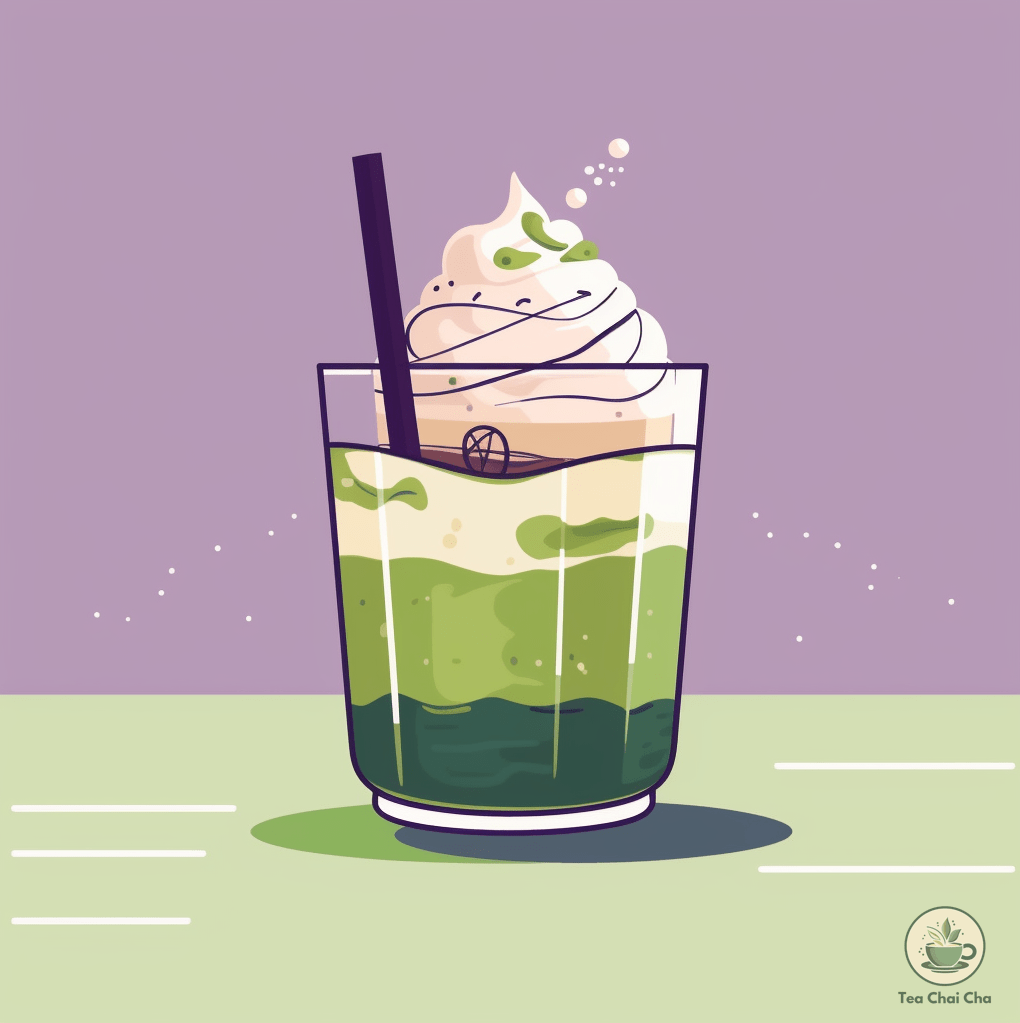
I Love Cold Brew Matcha!
If you’re just starting out and want an easy and enjoyable way to have Matcha Iced Tea, I highly recommend trying the cold brew method.
It’s perfect for beginners because it’s straightforward and doesn’t demand a bunch of fancy tools.
With cold brew Matcha, I don’t need to stress about getting the matcha perfectly frothy or using a whisk – it’s a more laid-back approach.
All I need is my matcha powder, some cold water, any container with a lid, and a handful of ice cubes.
No need to bother with heating up water, and I can even use something as simple as a mason jar or any container that seals well.
I just mix the matcha powder with cold water, give it a good shake, let it hang out in the fridge, and let the magic happen.
The outcome is a smooth and mild matcha flavor that’s just right for sipping on those warm days.
And if I’m in the mood for a touch of sweetness, I add some sweetener to customize it to my liking.
So, if you’re like me – either new to making matcha or seeking a hassle-free way to enjoy it – the cold brew technique is your new best friend.
It’s cool, perfect for beginners, and doesn’t require a bunch of gear – a definite win for anyone looking for a delightful matcha treat with ease!
9 Factors That Affect the Flavor of Matcha Tea
Here are some factors that have a direct impact on the flavor of your matcha tea:
1. Grade of Matcha Tea
The grade of Matcha tea you choose will greatly impact its flavor.
Higher grades, like ceremonial Matcha, tend to have a smoother and sweeter taste, while lower grades might have a slightly bitter or astringent note.
2. Origin of Matcha
Where the Matcha tea is grown matters. Matcha from different regions can have distinct flavors.
Japanese Matcha is known for its vibrant green color and grassy, umami-rich taste.
3. Processing Methods
How the tea leaves are processed plays a role in flavor.
Shade-grown leaves have a milder taste due to increased chlorophyll content, while stone-ground leaves might provide a more robust flavor.
4. Harvesting Time
The time of harvest affects flavor.
Spring-harvested Matcha tends to be sweeter and more flavorful, while fall-harvested Matcha might have a slightly stronger bitterness.
5. Color and Aroma
The color of the Matcha can give you hints about its flavor.
Bright green Matcha often has a fresher taste, while duller green might indicate a stronger, more vegetal flavor.
A rich, grassy aroma usually indicates good quality.
6. Texture and Mouthfeel
The texture of Matcha when mixed can impact your experience.
Creamy Matcha with a velvety texture is often preferred, as it indicates the tea has been well whisked and properly prepared.
7. Storage Conditions
Proper storage is crucial. Matcha should be kept in an airtight container away from light, heat, and moisture.
Well-stored Matcha maintains its flavor, while improperly stored tea might taste flat or stale.
8. Preparation Technique
How you prepare Matcha matters.
Proper whisking creates a frothy layer and blends the flavors well, while inadequate mixing can lead to a clumpy texture and uneven taste.
9. Additional Ingredients
Adding sweeteners like honey or milk can alter the flavor of Matcha.
Experimenting with these additions can create a personalized taste that suits your preferences.
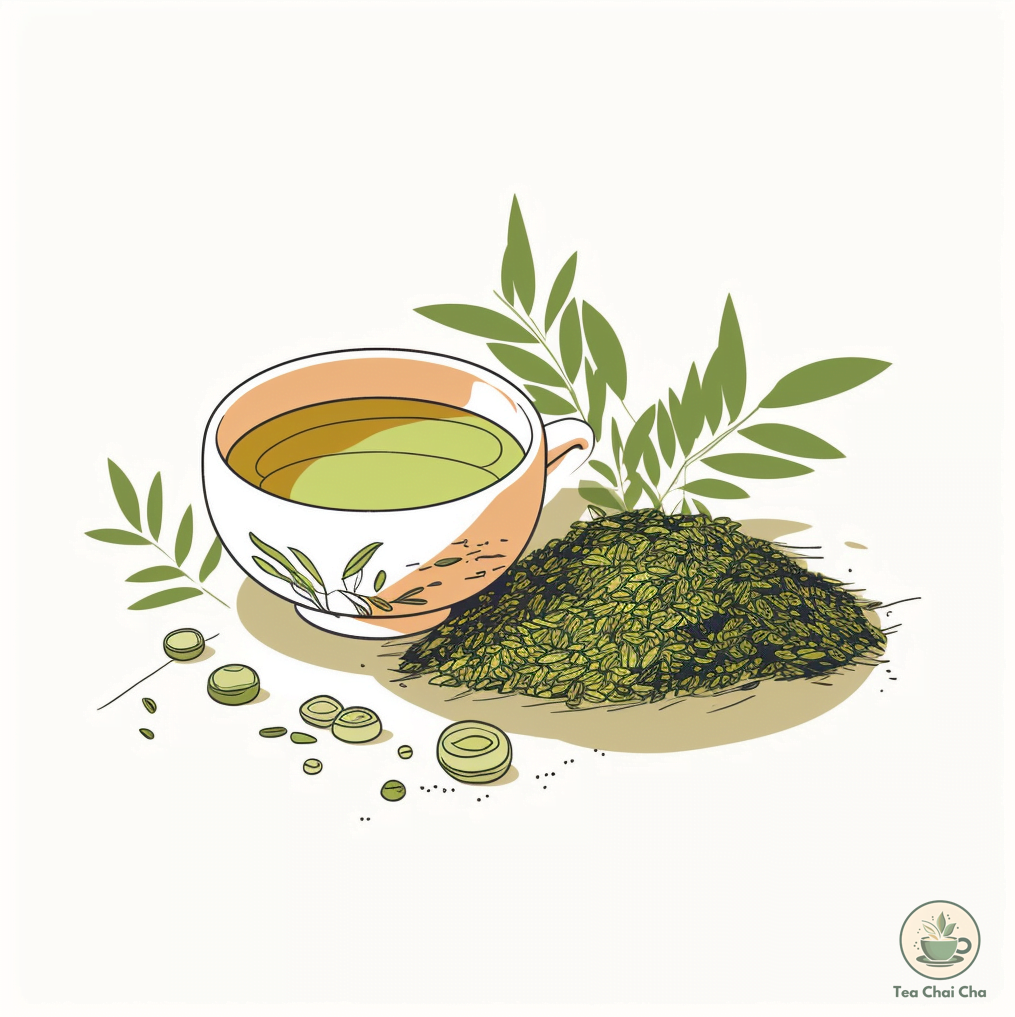
How to Make Tea Matcha Taste Good
If you find that your matcha tea doesn’t taste quite right or if you’re looking to enhance its flavor, here are some tips to help you enjoy it more:
Adjust the Matcha-to-Water Ratio
Too Weak? If your matcha tastes weak, try using more matcha powder.
A good starting point is 1 teaspoon of matcha for every 6 ounces of hot water.
You can adjust this to suit your taste by adding a little more matcha until you find the right balance.
Too Strong? Conversely, if it’s too strong, reduce the amount of matcha powder.
Start with less than a teaspoon and gradually add more until you reach your desired taste.
Use the Right Water Temperature
Too Bitter? If your matcha is bitter, it may be due to using water that’s too hot.
Matcha is best prepared with water around 175°F (80°C). Boiling water can make it taste harsh so you can start at 158°F (70°C).
Let your kettle cool for a few minutes before using.
Sweeten It Up
Too Earthy? Some people find matcha’s natural earthy flavor challenging.
You can add a touch of sweetness to mellow it out.
A teaspoon of honey, agave syrup, or maple syrup can work wonders. Experiment to find your ideal level of sweetness.
Froth It Properly
Too Lumpy? To avoid lumps in your matcha, use a bamboo whisk (chasen) or a milk frother.
Whisk vigorously in a zigzag motion until it’s smooth and frothy. This also adds a nice texture to your matcha.
Experiment with Milk
Too Bland? Try making a matcha latte. Heat milk (dairy or non-dairy) and mix it with your matcha.
The creamy texture and added flavor can make matcha more enjoyable.
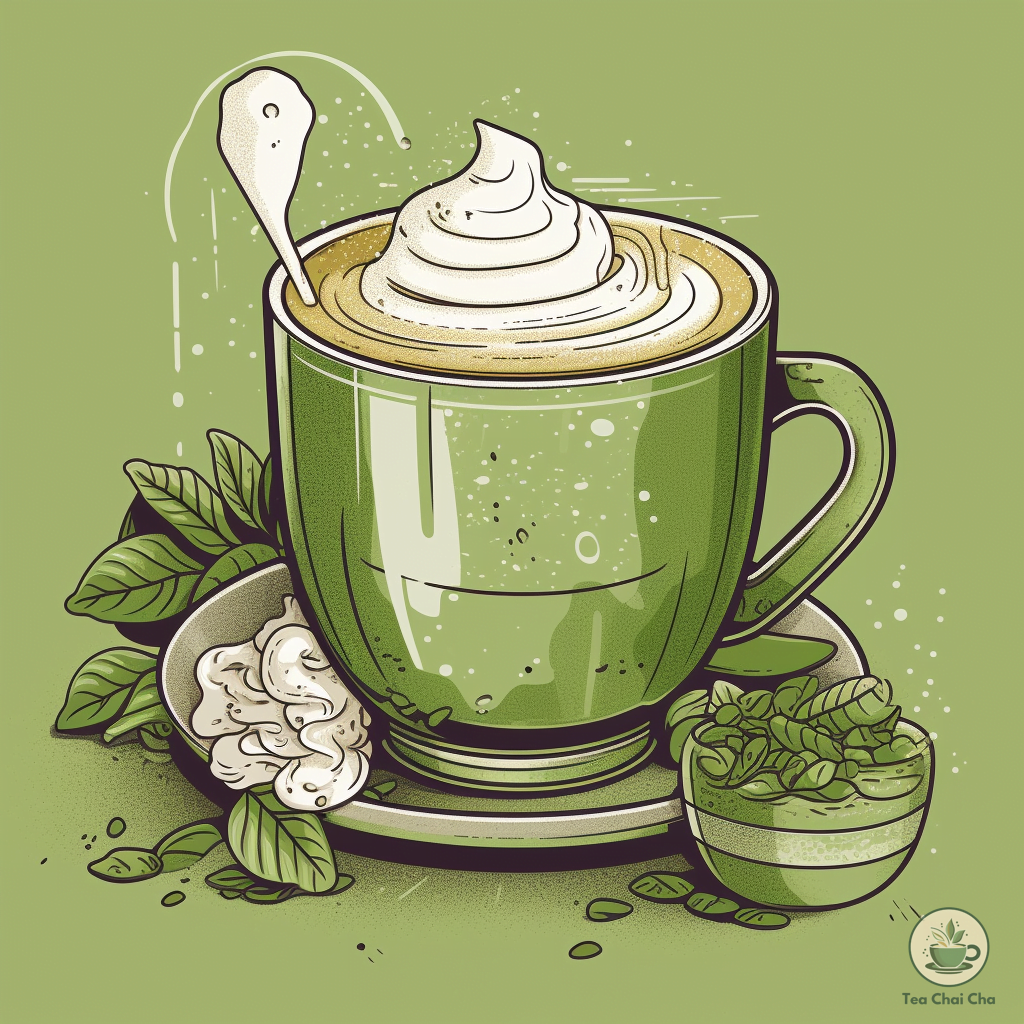
Different Matcha Drinks to Try
If you’re eager to explore various ways to enjoy matcha, here are some delightful and easy-to-make options to consider:
1. Iced Matcha Latte
For a refreshing twist on the traditional matcha latte, try this chilled version:
- Begin by preparing a concentrated shot of matcha using a small amount of hot water.
- Fill a glass with ice cubes to keep your drink cool.
- Pour cold milk of your choice (whether dairy or non-dairy) over the ice.
- Mix the concentrated matcha shot with the cold milk for a vibrant green color and rich flavor.
- If you prefer a touch of sweetness, stir in honey, agave syrup, or a flavored syrup.
2. Matcha Smoothie
Elevate your smoothie game with the vibrant goodness of matcha:
- In a blender, combine a ripe banana, a scoop of Greek yogurt, a teaspoon of honey, and a handful of ice.
- Add a teaspoon of matcha powder to the mix.
- Blend all the ingredients until smooth and creamy.
- The result is a balanced and energizing smoothie with a pleasant matcha kick.
3. Matcha Lemonade
For a tangy and invigorating beverage, combine matcha with the zest of lemon:
- Mix a teaspoon of matcha powder with freshly squeezed lemon juice and water.
- Adjust the water and lemon juice proportions based on your taste preferences.
- If desired, add a natural sweetener like agave syrup or honey to balance the flavors.
- Serve over ice for a revitalizing and citrus-infused matcha treat.
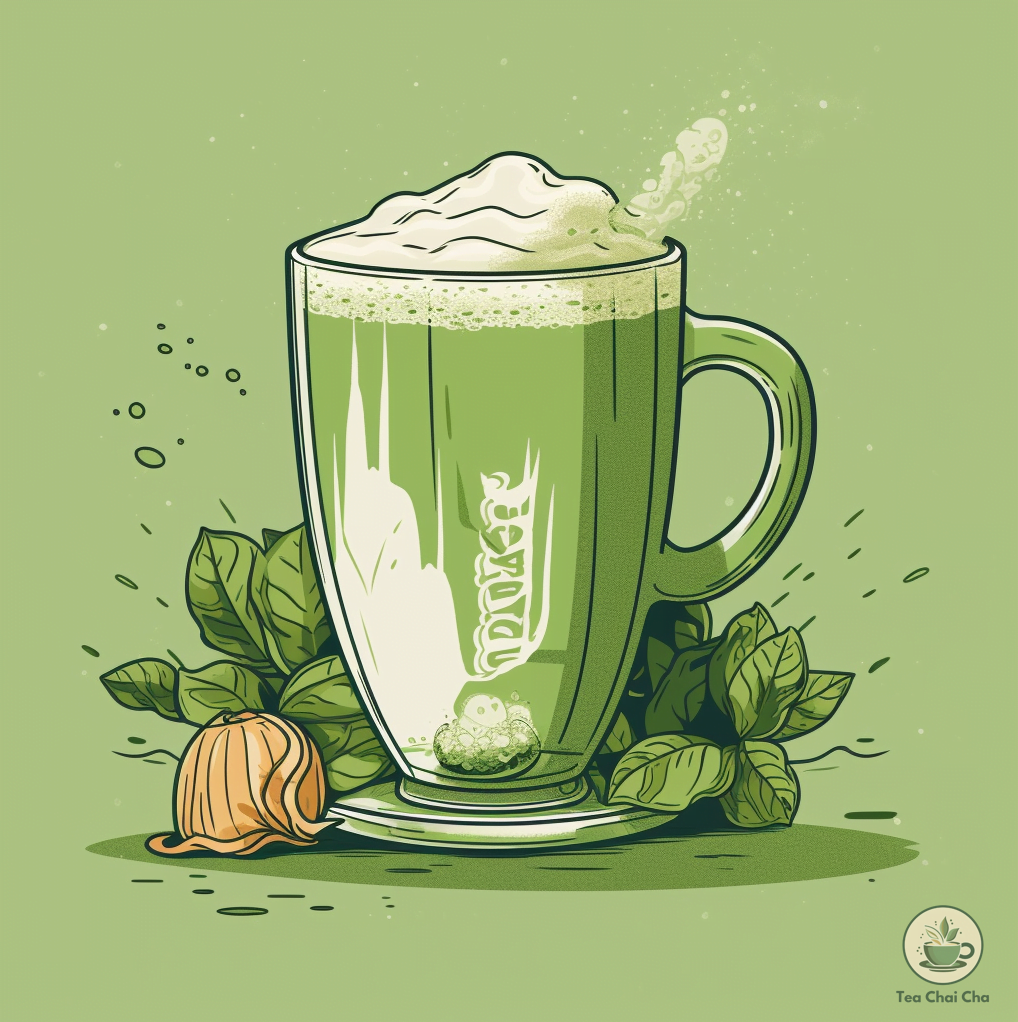
4. Matcha Frappuccino
Satisfy your cravings for a creamy, icy delight with this homemade matcha frappuccino:
- Blend a teaspoon of matcha powder with ice cubes, milk (dairy or non-dairy), and a teaspoon of sugar.
- Adjust the sugar amount according to your sweetness preference.
- Blend until the mixture is smooth and frothy.
- Pour into a tall glass and enjoy your homemade matcha frappuccino.
5. Matcha Mojito
Put a creative spin on the classic mojito cocktail with the addition of matcha:
- Prepare a concentrated matcha shot using a small amount of hot water.
- In a glass, muddle fresh mint leaves and lime juice to release their flavors.
- Add the matcha shot and a touch of honey for sweetness.
- Fill the glass with soda water and ice.
- Stir gently and garnish with a sprig of mint for a unique and refreshing matcha-infused mocktail.

Matcha Green Tea Food Pairing
Let’s explore some delicious food pairing options to complement your matcha tea!
Cheese and Crackers
Pairing matcha with a mild cheese like mozzarella or a light, nutty cheese like gouda can create a sophisticated and harmonious flavor profile.
Enjoy them with whole-grain crackers for added texture.
Fresh Berries
Enjoy the vibrant flavors of matcha by pairing it with a handful of fresh berries like strawberries, blueberries, or raspberries.
Their natural sweetness balances the earthy notes of matcha, creating a delightful contrast.
Nuts and Seeds
Crunchy nuts and seeds, such as almonds, walnuts, or pumpkin seeds, make for a satisfying matcha accompaniment.
They provide a nice texture and a subtle nuttiness that complements the tea’s unique taste.
Dark Chocolate
Indulge your taste buds with a square of dark chocolate alongside your matcha tea.
The slight bitterness of the chocolate enhances the smooth and grassy flavors of matcha.
Sushi or Sashimi
For a savory option, consider pairing matcha with sushi or sashimi.
The umami-rich flavors of seafood go hand in hand with matcha’s complexity, making it a delightful choice for a light meal.
Rice Crackers
Delicate and crispy rice crackers provide a wonderful contrast to the creamy texture of matcha tea.
Their mild flavor lets the matcha shine while adding a pleasant crunch.
Yogurt Parfait
Create a refreshing parfait by layering matcha tea with Greek yogurt and a drizzle of honey.
This combination offers a creamy, tangy, and slightly sweet experience that’s both satisfying and energizing.
Citrus Fruits
A citrusy burst of flavor can complement matcha’s earthy tones.
Try segments of oranges or tangerines to add zesty brightness to your tea-drinking experience.
Oatmeal or Granola
Start your morning with a nutritious combo by enjoying matcha with a bowl of oatmeal or granola.
The hearty flavors of oats or the crunchy texture of granola can be a lovely match with your tea.
Mochi
Delight in the soft and chewy texture of mochi alongside matcha.
These Japanese rice cakes can bring a subtly sweet and delightful contrast to the tea’s character.

When to Drink Matcha Tea
Can’t decide when you should be sipping on the Matcha goodness?
Here are a few options to consider that I like:
Morning Boost
Starting your day with matcha tea can give you a gentle energy boost.
Its natural caffeine combined with L-theanine provides a calm alertness, helping you kickstart your morning routine.
Afternoon Pick-Me-Up
Feeling that mid-afternoon slump?
Sip on some matcha to stay focused and alert. It can be a healthier alternative to sugary snacks or excessive coffee.
Pre-Workout Fuel
If you’re planning to exercise, having matcha about 30 minutes before your workout can provide an energy lift and enhance your performance.
Mindful Moment
Matcha has a calming effect, thanks to the amino acid L-theanine. Enjoy a cup during a quiet moment to relax and unwind.
Study or Work Session
When you need to concentrate, matcha can be a great companion.
It offers sustained energy without the jitters, helping you stay productive.
Social Sip
Share a cup of matcha with friends or family during a casual get-together. Its unique flavor can be a conversation starter.
Remember, everyone’s body reacts differently, so feel free to experiment and find what time works best for you.
Whether you’re looking for an energy boost, a moment of calm, or simply a delicious drink, matcha tea can be enjoyed throughout the day!
Related to Making Tea

Classic Matcha Tea Recipe
Recipe by Tania FaysalCourse: DrinksCuisine: Japanese1
servings5
minutes5-10
kcal5
minutesTraditional Japanese matcha preparation emphasizes the purity and flavor of the tea, and is enjoyed as it is. Here's a simple recipe to make Matcha at home.
Ingredients
2g high-quality matcha powder
60ml hot water (not boiling, around 175°F or 80°C)
Optional: Traditional Japanese sweets (wagashi) for pairing
Directions
- Sift the Matcha Powder: Sift the matcha powder into a dry, clean bowl using a fine mesh strainer. This step helps break up any clumps and ensures a smooth texture.
- Warm the Teacup: Pour hot water into your teacup to warm it. Discard the water after a few seconds.
- Measure the Matcha: Measure 2 grams of sifted matcha powder using a bamboo matcha scoop (chashaku). You can adjust the amount based on your preference for strength.
- Add Hot Water: Heat 60ml of water to around 175°F (80°C) – this is below boiling to preserve the delicate flavors of matcha. Pour a small amount of hot water (about 1/4 of the total) into the bowl with the matcha powder.
- Whisk the Matcha: Use a bamboo whisk (chasen) to vigorously whisk the matcha and water together in a "W" motion until the mixture becomes frothy and smooth. This usually takes about 15-20 seconds.
- Add Remaining Water: Gradually add the rest of the hot water into the bowl and continue to whisk gently until the mixture is well combined and a layer of froth forms on the surface.
- Serve Immediately: Pour the prepared matcha into the warmed teacup. Traditionally, matcha is served without any additives, but you can adjust the strength by adding more or less water.
- Enjoy with Sweets (Optional): If desired, enjoy your matcha with traditional Japanese sweets (wagashi), which complement the tea's flavor and balance the bitterness.
Recipe Video
Frequently Asked Questions (FAQs)
What does Matcha tea taste like?
Matcha tea has a unique, rich, and slightly bitter taste with a vegetal undertone. Some describe it as earthy and slightly grassy.
The flavor can be influenced by the quality of the matcha and how it’s prepared.
Does Matcha tea have caffeine?
Yes, matcha tea does contain 19-44 mg caffeine per gram. The caffeine content can vary based on factors like the serving size and the specific matcha variety.
Matcha also contains L-theanine, an amino acid that can counterbalance the caffeine’s effects and provide a calm focus.
Is Matcha a real tea?
Yes, matcha is a type of real tea. It’s made from shade-grown tea leaves that are ground into a fine powder.
Unlike other teas where you steep the leaves and discard them, with matcha, you consume the entire tea leaf, giving you a more concentrated flavor and nutritional content.
How many calories are in Matcha tea?
A typical serving of matcha tea (about 1 teaspoon of matcha powder) contains around 3-5 calories. The exact calorie count can vary depending on the brand and serving size.
Do you mix matcha with water or milk?
Traditionally, matcha is mixed with hot water and whisked to create a frothy, vibrant green tea.
However, you can also mix matcha with milk (dairy or plant-based) to create a creamy matcha latte. It’s a matter of personal preference.
How long to boil water for matcha?
Boil water and let it cool for a few minutes before using it to make matcha.
Water that’s too hot can negatively affect the taste and texture of the matcha. Boil water for matcha for around 158-175°F (70-80°C) temperature.
Can I mix matcha powder with milk?
Yes, you can mix matcha powder with milk to create a matcha latte. You can directly mix it with milk or mix it with water first and then add milk to it.
I suggest you to make a paste with water first and then mix it with milk for a nice consistency.
Why not boiling water for matcha?
Boiling water can make the matcha taste bitter and may damage the delicate flavor compounds.
Slightly cooler water helps preserve the desired taste and color of the matcha.
Is matcha better than coffee?
Whether matcha is better than coffee depends on your preferences and needs.
Matcha provides a more sustained energy boost due to its combination of caffeine and L-theanine, while coffee can lead to more abrupt energy spikes and crashes.
Matcha also offers antioxidants and other nutrients.

